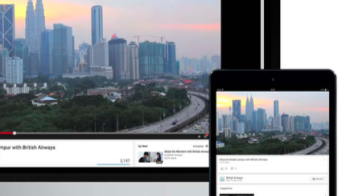Humanising interactions with consumers across screens
Tal Chalozin
Tal Chalozin, CTO & Co-founder of Innovid, explains that connecting with humans on an emotional level will always be crucial to brands’ success.
Humanising the interactions between brands and their audiences might have seemed much more authentic when humans were actually present on both sides of the exchange. But for advertisers with hundreds of thousands to millions of interactions daily, the fact is there’s a limit to what can be achieved without programmatic technology. This doesn’t mean that today’s consumer-brand exchanges are devoid of a human touch, however. In fact, the lengths marketers have gone to introduce personalised interactions far outweigh what brands were able to accomplish in the past.
Personalised digital experiences were the first step towards intimacy between businesses and their customers at scale. The next step in this holy grail of marketing, is recognising consumers on any screen they’re on, any location they are in, and their perceived future brand encounters—and connecting the dots with data.
Just as in real life, creating familiarity in a vast digital world, is a function of both data and the associated actions or feelings that go with it. Replicating this very human experience through technology is currently a patchwork job being tackled by three major sources: Device IDs (from hardware manufacturers such as Apple, Roku and Google), data clearinghouses (think Facebook, Twitter and Nielsen), and myriad other vendors who are stitching together data to unearth individuals as they move from device to device—and then helping brands act on it in real-time through various experiential offerings.
The need for a more unified approach to accomplishing all of this has set off an arms race to find new ways of getting a clear, unified picture of individuals across devices and platforms. So, what does the future look like for achieving this?
The Great Data Arms Race
“Data is the new oil” is the latest catch phrase in many boardrooms. So, it’s not a coincidence that all of the major players are throwing serious resources behind their data gathering efforts. Facebook is, by most accounts, the leader because of the massive amounts of personal and targeted information it collects from users. The prevalence of their SSO capabilities also means that they are gathering user data across devices and third-party platforms which can be directly tied to a specific individual.
Like oil, data is useless until it’s refined. Since all of this information is now being captured through many different avenues—cookies, SSO accounts, device IDs, probabilistic methods—there is more work to be done to make sense of it all.
Pulling the Pieces Together
Brands are looking to reliable ad-technologies with “open” platforms to help them link the data that their gathering with content that’s specific to individual users and the specific screens they’re on. These platforms integrate with several data funnels on one end, and help advertisers synthesise all of this data and decide how to act on it on the other.
Open platforms also play a strategic part in content delivery by helping advertisers determine whether a viewer is watching from a connected TV, a desktop, or mobile device. From there, they give them the ability to instantly modify the content.
The Effect on Content
With data and delivery working together, advertisers can now rethink the way they develop and measure content across devices. Advertising campaigns are also quickly morphing into thoughtful story sequences instead of one-off placements.
For example, it’s not unusual for brands to deliver calls-to-action to TV viewers that are specifically tailored to get users to engage with the campaign on a mobile device, where they experience a different part of the “story.” By presenting the story in parts like this and encouraging familiar behaviour on devices, brands are much more likely to connect with humans in a way that feels natural rather than forced.
Being able to connect with humans on an emotional level will always be crucial to brands’ success. And the ways they do it will consistently evolve. Currently, the key is to be able to turn mounds of data into relevant, sequential content delivered on the right devices.
Related content
Longer-form video is capturing attention on mobile screens across the globe
Learn moreFreeWheel: Video Monetization Report Q1 2015
Learn moreCEDAR: Video Content Marketing
Learn moreVideo advertising: Assume nothing
Learn more
Rediscover the joy of digital advertising
Champion connections instead of clicks. Capture audiences' imaginations, not just their attention. Boldly find your own beat instead of letting tech set the pace. It’s time to rediscover the joy of digital.



